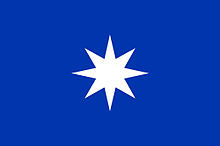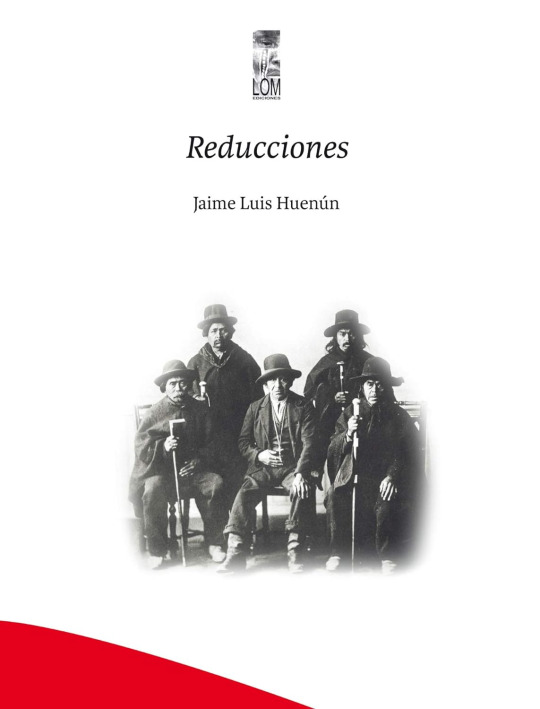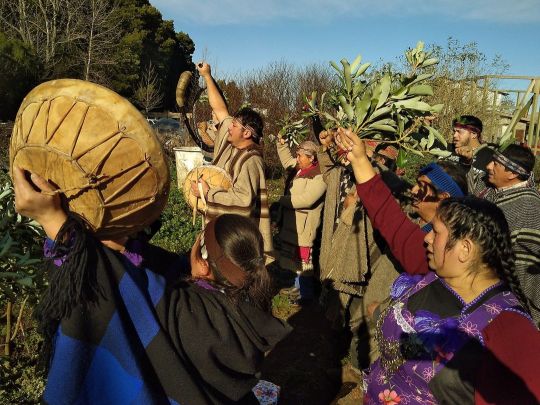#Huilliche
Text
For queer people worlwide
If you speak any of the languages listed below you would greatly help me out if you could teach me LGBT+ vocabulary, either through DMs or just in the replies/reblogs. I'm building a global LGBT+ dictionary but some languages are just harder to access in my side of the world.
The languages are the following (in no particular order):
Kashmiri
Caribbean Hindustani
Selk'nam
Ossetian
Bolze
Erromintxela
Petu/petuh
Huilliche
Hmong
#Huilliche#Kashmiri#Caribbean hindustani#selk'nam#selknam#hmong#erromintxela#petuh#ossetian#langblr#polyglot#language#languages#idiomas#LGBT#LGBT+#LGBTQ#LGBTQI#LGBTI#LGBTA#LGBTQIA#LGBTQIA2S#Queer#LGBTTT#lgbtq community
48 notes
·
View notes
Text

my daydream screams bitter 'til the end
the love I share -true- selfish to the heart
my heart, my sacred
heart...
ancud chiloé, enero 2023
#35mm#filmisnotdead#analogphotography#chilwe#chiloe#FUERA SALMONERAS#huilliche#sur de chile#chile#smashing pumpkins
6 notes
·
View notes
Text


La bandera de batalla. / Bandera custom antigua.
Obsesionada con ambas, la primera bandera fue literalmente la que representa los principios de lo que ahora es chile, (bandera Araucana con la estrella de venus/guñelve en medio) y la otra que duro menos que lo que dure yo un año de U. Pero está preciosísima.
A todo esto ya quiero dibujar a mapuche wn, pa que vean como le daba charchazos al chilito cuando se portaba mal siendo chikitito. Sin webear, la madre fue quien le enseño a ser tan detonao (saber pelear, cuando y como, la agresividad y carácter).
El pueblo araucano o mapuches no eran un imperio, eran tribus, huilliches, pehuenches, Tehuelches. Sin embargo le hacían la pelea a cualquier weon que faltará el respeto a la 🌎, sobre todo sus territorios, habían pacíficos y otros que no, los mapuches se la pasaban en tensión contra los incas y literalmente los weones se pasaban a cualquiera que quisiese, aunque no fuesen una cultura tan marcante.
Los mapuches se hicieron pico a los españoles en la colonización, el personaje que más recuerdo que los enfrentó hasta la muerte es "Galvarino" el weon que le cortaron las manos y se amarro cuchillas de piedra para reemplazarlas y descuartizar más de un español xddddddd por algo todavía sigue vigente arta población mapuche en chile a pesar de no haber sido imperio xD
6 notes
·
View notes
Text

En algún lugar de la costa de la región de los ríos, contemplando la sencillez de las personas y la grandeza de la naturaleza. Entre pescadores, habitantes y el bosque nativo que pinta el paisaje. Perdido entre el cielo, el mar, coihues, lengas, y alerces. Territorio Huilliche me comentan los habitantes de estos lugares. Perdido pero encontrándome, pensé.
2 notes
·
View notes
Text
Churches of Chiloe

Today, we're journeying to the mystical island of Chiloé in southern Chile, home to a unique collection of churches that have earned a spot on the prestigious UNESCO World Heritage list. These wooden churches are not just architectural marvels but also a testament to the rich cultural fusion that took place on this remote island.
The Churches of Chiloé are a stunning example of what happens when cultures collide in the best possible way. Built between the 18th and 19th centuries, these churches reflect a blend of indigenous Mapuche culture and Spanish colonial influences, resulting in a distinct architectural style known as "Chilota." The craftsmanship of the local Huilliche carpenters, combined with European techniques, created something truly extraordinary.
In 2000, the Churches of Chiloé were officially recognized as a UNESCO World Heritage Site, highlighting their global cultural significance. The designation helps ensure that these wooden treasures are preserved and protected for future generations, allowing visitors from around the world to experience the magic of Chiloé.
What makes these churches particularly special is their construction material—wood. In a region where wood is abundant but stone is scarce, the local builders turned to the native timber, creating structures that have stood the test of time. The churches are built entirely of wood, from the grand façades to the intricate interiors, showcasing the incredible skill of the artisans who crafted them.
The UNESCO World Heritage designation encompasses 16 churches spread across Chiloé Island and the nearby islets. Each church has its own unique character, but together they form a cohesive network that tells the story of the island's history, faith, and community spirit. Some of the most famous include San Francisco de Castro, with its vibrant yellow and purple exterior, and the serene Nuestra Señora de los Dolores in Dalcahue.
These churches have been the heart of their communities for centuries. Beyond their architectural beauty, they serve as places of worship, gathering, and celebration. The wooden bell towers, often visible from afar, have guided generations of Chilotes to these sacred spaces. The churches are a living part of the island’s heritage, with festivals, religious ceremonies, and traditions still very much alive today.
One of the standout churches is the San Francisco Church in Castro, the capital of Chiloé. Its striking yellow façade and Gothic-inspired design make it a must-see. Step inside, and you'll be greeted by a warm wooden interior with arched ceilings and vibrant stained glass windows. It's a perfect example of how these churches blend European influences with local craftsmanship.

Another gem is Nuestra Señora de Gracia de Nercon, located just outside Castro. This church, with its simple yet elegant design, perfectly encapsulates the Chilota style. The soft hues of the wooden interior and the peaceful atmosphere make it a serene spot for reflection.
A visit to Chiloé offers more than just a glimpse of these incredible churches. The island itself is a place of myths and legends, with lush landscapes, charming fishing villages, and a slower pace of life that invites you to relax and explore. Whether you're visiting during one of the island's many festivals or simply soaking in the tranquil atmosphere, Chiloé is a destination that stays with you long after you've left.
The Churches of Chiloé are not just buildings; they are symbols of a unique cultural heritage, blending faith, community, and craftsmanship in a way that is truly captivating. If you ever find yourself in Chile, make sure to journey to this enchanting island and experience the beauty of its wooden churches firsthand. ⛪️ 🌿 🇨🇱
0 notes
Text
Parque Tepuhueico participa en el Taller Ciudadano del Parque Tantauco
Fundación Futuro, llevó a cabo entre el 18 y 19 de noviembre de 2022 un Taller Ciudadano para Actores de la Sociedad Civil de Chiloé. Este taller consistió en una jornada de trabajo de dos días en el Parque Tantauco, con actividades de capacitación en educación ambiental, concientización del patrimonio natural y cultural de Chiloé, dinámicas grupales para promover los atractivos turísticos de las comunas, y fortalecimiento de los vínculos entre diversos actores sociales en la conservación ambiental.
Entre los objetivos abordados se destacan:
Valorización del Patrimonio: Rescate y valorización del patrimonio cultural y ambiental de las culturas Chona, Huilliche y Chilota.
Promoción de la Identidad: Reconocimiento del papel de los espacios de conservación en la promoción de la identidad y conciencia ecológica.
Fomento del Compromiso Ciudadano: Estimulación del diálogo y análisis crítico sobre los espacios naturales para fomentar un compromiso ciudadano con el desarrollo y protección de los ecosistemas.



0 notes
Quote
Sorcery is a 19th-century radicalisation story. On the rain-lashed island of Chiloé, Indigenous teenager Rosa (Valentina Véliz Caileo) works as a servant for German farmers; speaking their language and practising their Christian religion, she is cut off from her Huilliche roots. When all the homesteaders’ sheep die simultaneously, with twine braids found on their corpses, her father refuses to give up any culprits and paterfamilias Stefan (Sebastian Hülk) unleashes his hounds on him with lethal results. Sent to live with Mateo (Daniel Antivilo), an elder involved with Indigenous secret society La Recta Provincia, the orphaned Rosa senses the potency of their rituals and realises they could bring her justice.Often shot in sepulchral twilight, Sorcery lingers in an unresolved purgatorial space between the German settlers, the vilified tribal peoples, the Spanish-speaking governor (Daniel Muñoz) begrudgingly keeping the peace in this backwater posting, and Rosa herself. Instead of hitching itself to a Judaeo-Christian sense of evil and hysterical horror mechanics – especially when Stefan’s kids go missing – Murray lets Rosa’s awakening of consciousness seep slowly through. As she deepens her involvement with La Recta Provincia and undergoes an initiation with sorcerer Aurora, pacing that at first seems cautious gathers into an almost transmutational eeriness present throughout the landscape.
Sorcery review – orphaned girl out for revenge in unsettling Indigenous horror | Movies | The Guardian
1 note
·
View note
Text
Events 2.10
1258 – The Siege of Baghdad ends with the surrender of the last Abbasid caliph to Hulegu Khan, a prince of the Mongol Empire.
1306 – In front of the high altar of Greyfriars Church in Dumfries, Robert the Bruce murders John Comyn, sparking the revolution in the Wars of Scottish Independence.
1355 – The St Scholastica Day riot breaks out in Oxford, England, leaving 63 scholars and perhaps 30 locals dead in two days.
1502 – Vasco da Gama sets sail from Lisbon, Portugal, on his second voyage to India.
1567 – Lord Darnley, second husband of Mary, Queen of Scots, is found strangled following an explosion at the Kirk o' Field house in Edinburgh, Scotland, a suspected assassination.
1712 – Huilliches in Chiloé rebel against Spanish encomenderos.
1763 – French and Indian War: The Treaty of Paris ends the war and France cedes Quebec to Great Britain.
1814 – Napoleonic Wars: The Battle of Champaubert ends in French victory over the Russians and the Prussians.
1840 – Queen Victoria of the United Kingdom marries Prince Albert of Saxe-Coburg-Gotha.
1846 – First Anglo-Sikh War: Battle of Sobraon: British defeat Sikhs in the final battle of the war.
1861 – Jefferson Davis is notified by telegraph that he has been chosen as provisional President of the Confederate States of America.
1862 – American Civil War: A Union naval flotilla destroys the bulk of the Confederate Mosquito Fleet in the Battle of Elizabeth City on the Pasquotank River in North Carolina.
1906 – HMS Dreadnought, the first of a revolutionary new breed of battleships, is christened.
1920 – Józef Haller de Hallenburg performs the symbolic wedding of Poland to the sea, celebrating restitution of Polish access to open sea.
1920 – About 75% of the population in Zone I votes to join Denmark in the 1920 Schleswig plebiscites.
1923 – Texas Tech University is founded as Texas Technological College in Lubbock, Texas.
1930 – The Việt Nam Quốc Dân Đảng launches the failed Yên Bái mutiny in hope of overthrowing French protectorate over Vietnam.
1933 – In round 13 of a boxing match at New York City's Madison Square Garden, Primo Carnera knocks out Ernie Schaaf. Schaaf dies four days later.
1936 – Second Italo-Abyssinian War: Italian troops launch the Battle of Amba Aradam against Ethiopian defenders.
1939 – Spanish Civil War: The Nationalists conclude their conquest of Catalonia and seal the border with France.
1940 – The Soviet Union begins mass deportations of Polish citizens from occupied eastern Poland to Siberia.
1943 – World War II: Attempting to completely lift the Siege of Leningrad, the Soviet Red Army engages German troops and Spanish volunteers in the Battle of Krasny Bor.
1947 – The Paris Peace Treaties are signed by Italy, Romania, Hungary, Bulgaria, Finland and the Allies of World War II.
1954 – U.S. President Dwight D. Eisenhower warns against United States intervention in Vietnam.
1962 – Cold War: Captured American U2 spy-plane pilot Gary Powers is exchanged for captured Soviet spy Rudolf Abel.
1964 – Melbourne–Voyager collision: The aircraft carrier HMAS Melbourne collides with and sinks the destroyer HMAS Voyager off the south coast of New South Wales, Australia, killing 82.
1967 – The 25th Amendment to the United States Constitution is ratified.
1972 – Ras Al Khaimah joins the United Arab Emirates, now making up seven emirates.
1984 – Kenyan soldiers kill an estimated 5,000 ethnic Somali Kenyans in the Wagalla massacre.
1989 – Ron Brown is elected chairman of the Democratic National Committee, becoming the first African American to lead a major American political party.
1996 – IBM supercomputer Deep Blue defeats Garry Kasparov in chess for the first time.
2003 – France and Belgium break the NATO procedure of silent approval concerning the timing of protective measures for Turkey in case of a possible war with Iraq.
2009 – The communications satellites Iridium 33 and Kosmos 2251 collide in orbit, destroying both.
2016 – South Korea decides to stop the operation of the Kaesong joint industrial complex with North Korea in response to the launch of Kwangmyŏngsŏng-4.
0 notes
Text

10-2: Estamos respondiendo a fuego en árbol o pastizal en las esquinas de LOS HUILLICHES y LOS PEHUENCHES, en la comuna de CORONEL. Concurren 2 carros de Bomberos de Coronel #Coronel #F8 #BF4 https://viper.cl/m/?q=-36.99497772499%2C-73.181469407981&utm_source=dlvr.it&utm_medium=tumblr
0 notes
Text
RESEÑA LIBRO «REDUCCIONES», DE JAIME HUENÚN
por EDUARDO RAGÓN

Reducciones de Jaime Huenún es un libro mestizo como ningún otro que expone audazmente el conflicto mapuche, principalmente huilliche, frente al tosco y prepotente mundo occidental blanco a través de las últimas centurias.
Un libro mestizo como ningún otro pues muestra los distintos tonos literarios de piel que viven en la pluma de Huenún; al comienzo se presenta como un relato muy familiar y personal entrelazado con una crónica periodística, que mezcla los relatos de su abuela y sus familiares con recortes periodísticos e informes policiales, para abordar desde distintas aristas el conflicto de las reducciones, los despojos territoriales y el silenciamiento cultural. Este mestizo literario luego da paso a un despliegue magistral y sensible de poesía y prosa que literalmente canta y encanta, pues entremedio de los poemas se incrustan cantos y ceremonias indígenas que hablan de la resistencia infinita de las tradiciones de la tierra y de su gente. Un libro mestizo como ningún otro pues entremedio de la crónica, el canto y la poesía, Huenún atrevidamente propone un ejercicio casi plástico de la escritura al mezclar fotografías históricas reportes científicos nada poéticos; como ejemplo podemos citar la fotografía de un cuerpo femenino mapuche completamente desnudo junto a las anotaciones de su informe de autopsia y de la mezquindad confesada del investigador a cargo quien refunfuña sobre la torpe técnica mortuoria que se empleó en el procedimiento. Este breve pasaje dentro del libro propone a la imagen misma como figura de la poesía rebelde que nos sugiere denunciar y perseguir el racismo y el abuso colonial hasta las altas esferas y cúpulas del poder del hombre blanco, pues el genocidio y la violencia colonial, si bien parten en el campo de batalla, perpetrado por bandidos y ladrones, se extiende a través de un rastro kilométrico de sangre y se perpetúa hasta los museos y los laboratorios de académicos y científicos desalmados.
Sin embargo, este análisis mestizo de la obra de Huenún no radica únicamente en su estilo, su redacción y sus recursos, sino también en la visión que el autor propone, donde verdaderamente el concepto mismo de mestizaje es un testimonio vivo de una identidad indígena que se configura y se reconfigura constantemente de manera orgánica y espontánea, donde la otredad huilliche persiste y revive constantemente como el caudal de los ríos que Huenún describe a lo largo de su libro. A través de los distintos pasajes de esta obra podemos encontrarnos con distintos tipos de resistencias, violentas y no violentas; desde el huilliche más viejo y apegado a sus raíces cuyo testimonio es difícilmente inteligible en castellano, pasando por el huilliche atropellado y resignado, cuya hambre y frío (estratégicamente dispuestos desde el gobierno como una herramienta represiva) no le permiten cavilar sobre el despojo territorial y lingüístico, presa del arrebato cultural de la creciente nación chilena; y pasando también por los hijos de ambos personajes, algunos que resisten desde la lucha del garrote y los gritos, y otros que vencidos y nostálgicos continúan adelante extrañando algo que no saben que extrañan.
Y si bien Reducciones, como sugiere su título, habla sobre la cultura periférica del territorio y las tradiciones reducidas, difícilmente se articula como un relato de lamentos, ni aborda el complejo fenómeno desde la perspectiva histórica tradicional, sino más bien lo hace desde el testimonio infinitamente vivo que surge desde “la lengua de las abuelas”, como bien describe su autor, para contar el testimonio vivencial de un pueblo entero a través de la oralidad indígena característica. Es principalmente el canto y el cuento de las abuelas y familiares las que sostienen la obra de Huenún, quien hábilmente logra traerlas a la vida a través del eco transversal de su propia comunidad.
0 notes
Text

B R U J E R I A
Isla de Chiloé, 1880. Rosa Raín es una niña Huilliche que, tras el asesinato de su padre a manos de unos colonos alemanes, busca justicia con Mateo, líder de una organización de brujos llamada “La Recta Provincia"
1 note
·
View note
Text
ABOUT Nehuén

NAME : Nehuén
GENDER : Male.
PRONOUNS : He/They.
SPECIES : Vampire.
PLACE OF BIRTH : Chile.
PEOPLE : Huilliche, Mapuche.
AGE AT TURNING : 42.
YEAR OF TURNING : 1551.
SEXUAL PREFERENCE : Pansexual.
PLACE OF RESIDENCE : Brooklyn, USA.
FACE CLAIM : Pedro Pascal.
FACTS/NOTES :
Sometimes wears glasses because he likes how he looks in them.
Can speak Huilliche, Mapudungun, Spanish, English.
Whilst he is still partial to the traditional wear of his people, Nehuén has evolved his own style over the years. (Elements of Oberyn Martell with Pedro's own style).
VERSES :
//Details to expanded upon//
OUR FLAG MEANS DEATH/BLACK SAILS :
Nehuén has been a pirate now for over 20 years. Rising up to become Captain of his own ship within the first 7 years where he has since developed a reputation for being a somewhat fair (for a pirate), respected yet still feared pirate. Whilst he would give someone a fair say in a deal, he was not one to be crossed.
GOOD OMENS :
Nehuén is a demon of hell who has a like for experiencing things on Earth. His visits there are not always sanctioned and approved by Hell but the demon had grown to not care what they think.
#muse: nehuén#about: nehuén#face claim: nehuén#face claim: pedro pascal#aesthetic: nehuén#music: nehuén#verses: nehuén : ofmd/bs#verses: nehuén : good omens
1 note
·
View note
Video
vimeo
AMANDA TRAILER ENG from Marco Mazzoni on Vimeo.
Amanda is a young Mapuche Huilliche indian girl who lives with her family
on a small island in southern chilean Patagonia.
Her days consist in working as a fisher with her uncle from dawn until lunch.
Sadly there is less and less fish: the intensive exploitation of the archipelago caused by salmon multinationals has made fishing difficult
and not very productive.
Slowly she begins to fall in love with Manuel, a guy from the same community, which learns about the clashes and the demonstration in distant Santiago.
So he decides to leave to join it: contributing to the fight, in his case against the intensive salmon farming that pollutes the archipelago,
is essential.
Amanda will now have to make a decision!
0 notes
Text
INDIGENOUS BRAZILIAN & SOUTHERN CONE RESOURCES
The Anthropological Masterlist is HERE.
Brazil is the largest country in South America. It includes the Amazon basin, the Cerrado, and more.
APINAJÉ ─ “The Apinajé, or Apinaye, people are an Indigenous South American people. They are native to eastern Brazil, in the state of Tocantins.”
─ Apinajé Culture
─ Apinajé Language
─ Apinajé Phonology
BORORÓ ─ “The Bororó people are an Indigenous South American people. They are native to the Brazilian state of Mato Grosso.”
─ Bororó Culture
─ Bororó Music
KARAJÁ ─ “The Karajá, or Iny, people are an Indigenous South American people. They are native to Brazil, in the Araguaia River valley.”
─ Karajá Culture
─ Karajá People (in Portuguese)
─ Karajá Dictionary
TUCANO ─ “The Tucano people are an Indigenous South American people. They are native to the northwestern Amazon Rainforest, surrounding the Vaupés river.”
─ Tucano Culture
─ Tucanoan Languages (in Spanish)
TUPI ─ “The Tupi people are an Indigenous South American people. They are native to southeast Brazil.”
─ The Portuguese and the Tupi
─ Tupi Language
─ Tupi Language Resources
TUPINAMBÁ ─ “The Tupinambá people are an Indigenous South American people. They are native to Brazil.”
─ Tupinambá Information (in Portuguese)
The Southern Cone is a South American region that constitutes the southernmost part of South America.
CHAMACOCO ─ “The Chamacoco people are an Indigenous South American people. They are native to Paraguay.”
─ Chamacoco Information
─ Chamacoco Dictionary
GUARANÍ ─ “The Guaraní are a linguistic group that share the Guaraní language. They are native to modern-day Paraguay, southern Brazil, Argentina, and more.”
─ Guaraní Culture
─ Jesuit Missionaries and the Guaraní
─ Guaraní Language (in Spanish)
HUILLICHE ─ “The Huilliche, or Huiliche, people are an Indigenous South American people. They are native to Chiloé Island in the Chilean Archipelago.”
─ Huilliche Language
KAWÉSQAR ─ “The Kawésqar, or Alacalufe, people are an Indigenous South American people. They are native to southern Chilean Patagonia.”
─ Kawésqar Language (in Spanish)
─ Kawésqar Language Structure
─ Kawésqar Dictionary
MAPUCHE ─ “The Mapuche people are an Indigenous South American people. They are native to southern Chile and southwestern Argentina.”
─ Mapuche Information
─ Mapudungun Dictionary
TEHUELCHE ─ “The Aónikenk, or Tehuelche, people are an Indigenous South American people. They are native to the border between Argentina and Chile.”
─ Tehuelche Dictionary
#resources#brazilian#southern cone#apinajé#bororó#karajá#tucano#tupi#tupinambá#chamacoco#guaraní#huilliche#kawésqar#mapuche#tehuelche
55 notes
·
View notes
Photo

WE WIÑOL TXIPANTU EN CHAMIZA #wetripantu #wetxipantu #chamiza #mapuche #huilliche #etnic #indigena #indigenous #musicalinstrument #instrumentomusical #mapudungun #mapuzungun #tchesungun @ligpiuke #bufoland #puertomontt #chile #instamontt #puertomonttchile #melipulli https://www.instagram.com/p/CfLDlecOIxI/?igshid=NGJjMDIxMWI=
#wetripantu#wetxipantu#chamiza#mapuche#huilliche#etnic#indigena#indigenous#musicalinstrument#instrumentomusical#mapudungun#mapuzungun#tchesungun#bufoland#puertomontt#chile#instamontt#puertomonttchile#melipulli
3 notes
·
View notes
Text
Inche Kisulen (Yo estoy sola)
Inche kisulen
Alu Mapu
Inche puruken
Kisulen mo
Inche Trekaken
Afkintuwe mo
Tañi Püllü
Ta pun, inche ka ayen
Inche ka gümaken
Inche ka ayun
Inche ka ngillatuken
Traducción (castellano):
Yo estoy sola en tierras lejanas
Yo bailo sola
Yo camino hasta donde alcanza mi mirada
Mi espíritu
La noche
Yo también me rio
Yo también lloro
Yo también amo
Yo también imploro
Canción williche, por Anklaje.
8 notes
·
View notes